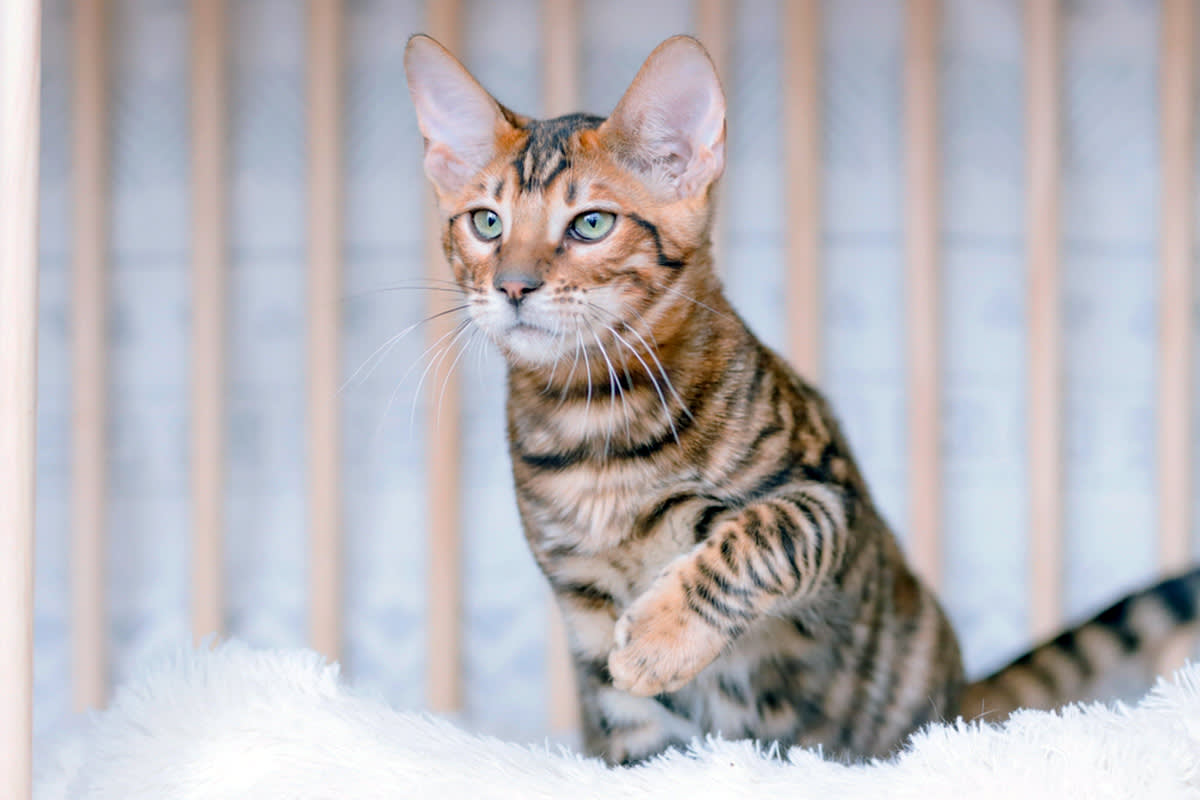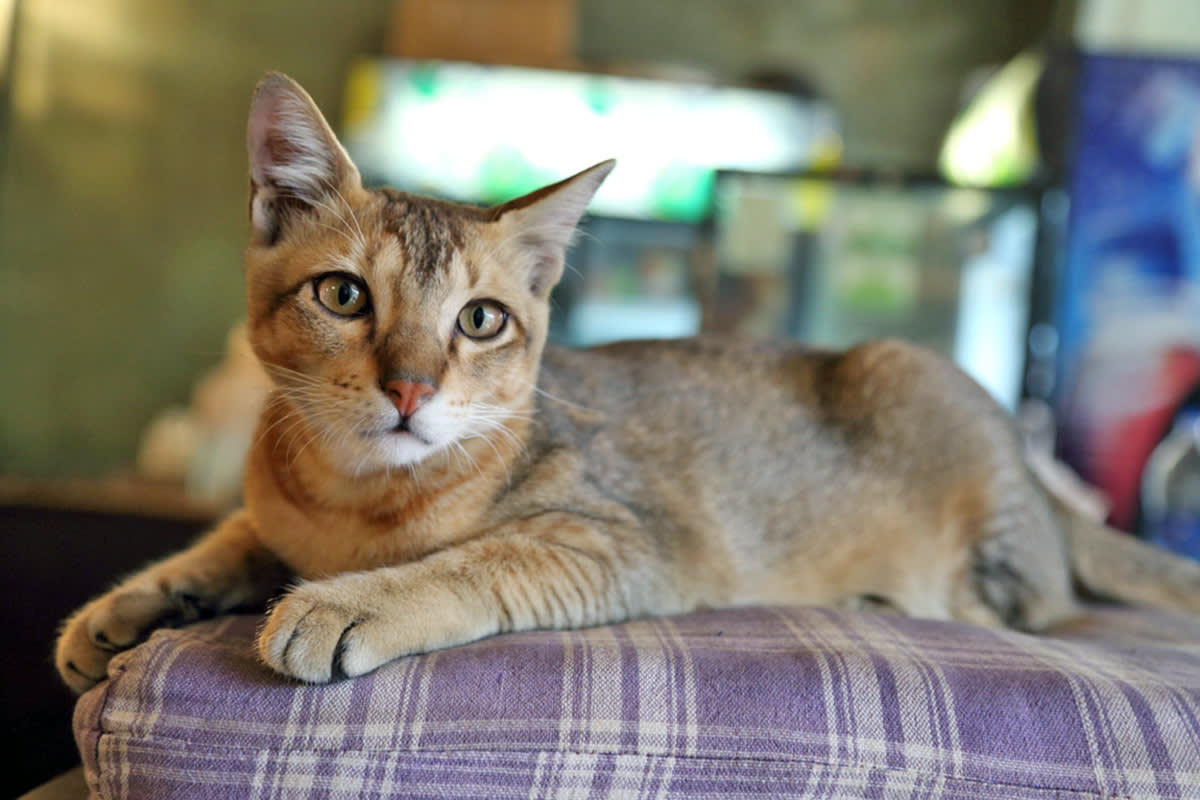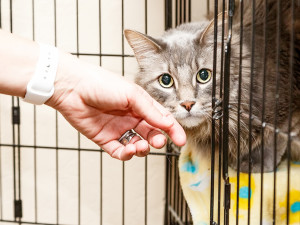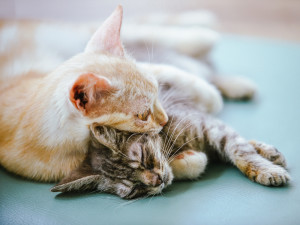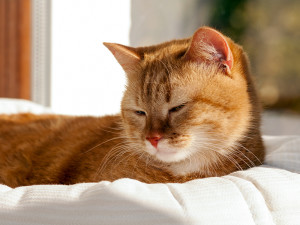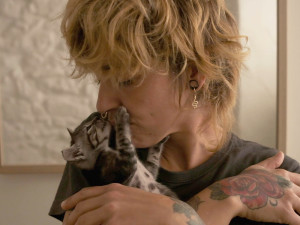What Are the Consequences of Breeding Designer Cats?
As shelters overflow with animals, it’s worth asking.

Share Article
When it comes to cats, I only recognize two types: cuddly and not cuddly. My three kitties span the snuggle spectrum, with one who loves to be stroked and squeezed, one who will (somewhat reluctantly) allow it, and one who high-tails it into the next room when he sees that let’s cuddle gleam in my eye. However, more discerning cat parents than I are likely familiar with dozens of different breeds, including some that you may never have heard of. (Listen to Taylor Swift impressively rattle off a list of cat breedsopens in new tab on live TV.)
Speaking of cat breeds, have you ever encountered a Chausie catopens in new tab? They’re known for being highly social and intelligent, with sculpted cheekbones and svelte physiques to rival any supermodel. Then there are Tiffanie catsopens in new tab, who are affectionate (cuddly!) and talkative. A Toyger catopens in new tab, as you might guess, resembles a miniature tiger, with a striped coat and athletic build. And Ringtail Sing-a-Lingopens in new tab cats have tails that curl toward their backs, giving them a distinctive look.
The thing that all these breeds — Chausie, Tiffanie, Toyger, and Ringtail Sing-a-Ling — have in common is that they’re all hybrids. Chausie cats are the result of jungle cats (like the ones ancient Egyptians often had mummified along with their departed pet parents) mating with domestic cats. The first breeding of a Chausie cat was recorded in 1990. Tiffanie cats were bred in the 1980s and are a mix of Persian Chinchillas and Burmese cats. Toygers were “designed” by a woman named Judy Sugdenopens in new tab (also in the 1980s), while Ringtail Sing-a-Lings are a relatively new breed (the first one was born in 1998), and still quite rare.
When animal shelters are overflowing with cats in need of homes, the ethics of breeding and selling these so-called “designer” cats are questionable, to say the least. But are there other considerations, such as health consequences, that affect these specially bred cats? I asked Dr. Julie Hunt,opens in new tab a veterinary consultant for Embrace Pet Insuranceopens in new tab, if she’s ever encountered any of these cats in her practice, and what people need to know about designer cat breeds.

“While I have not seen designer cats in my practice yet, I have treated purebred cats that suffered from diminished health as a result of structures purposefully created to meet breed standards,” Dr. Hunt told me. “For example, I treated a Persian cat that had such narrowed nasal openings that she required surgery in order to be able to run or play like a normal cat. The same cat also had chronic, severe infections in her facial folds, and tear-staining caused by her tear ducts not being formed right and not draining tears normally. Additionally, she had problems with dental disease and had to have teeth extracted because of her over-crowded oral cavity.” Poor kitty!
Why are purebred and designer breeds more likely to have health problems?
Dr. Hunt says that when breeders repeatedly cross-breed cats in the same family, they create offspring that are inbred. Inbreeding is linked with a number of health problems, including stunted growth — and that’s not all. “Any disease-causing genes in the original parents are likely to be amplified in the offspring,” Dr. Hunt says. “This has already been observed in some breeds where the gene pool is small; for example, Maine Coon cats are known to be at great risk of developing a heart disease called hypertrophic cardiomyopathy.”
Any extreme feature in cats can lead to health problems, according to Dr. Hunt. “Cats bred with either no tails, such as Manx cats, or with curly tails, are less able to express their attitude to other cats and to humans,” she says. “Additionally, some of these cats with short or altered tails can have changes to the end of the spinal cord that can cause urine or fecal leakage.” That’s not fun, for either the cats or the parents in this scenario.
And there’s more. “Brachycephalic, or ‘smushy-faced’ breeds, can have difficulty breathing and are prone to skin problems in the facial folds, and eye problems due to a shortened nose, smaller airways, and narrow eye drainage ducts (nasolacrimal ducts),” Dr. Hunt says. (It’s worth noting, though, that if you have your heart set on a specific breed, please consider doing your research and finding a purebred rescue.)
The U.K. has proposed laws against the breeding of certain types of hybrid catsopens in new tab, but is there any movement toward banning the breeding of designer cats, who are prone to such severe health problems, in the U.S.? “One could hope that we have learned from what happened with the creation of designer dog breeds,” Dr. Hunt says. “Some countries have banned the breeding of brachycephalic dogs due to the ethical concerns associated with purposefully breeding an animal with diminished health. Meanwhile, a brachycephalic dog breed, the French Bulldog, has become the most popular breed in the United States.”
The bottom line? “No veterinarian wants to see an animal have to struggle with these kinds of ongoing issues, all so that the owner can have an exotic or unique-looking cat,” Dr. Hunt says. As for me, I’ll be cuddling my sweet rescue cats, whom I adopted from the shelter down the street, a little bit closer tonight — if they’ll let me.
References
Adams, Christian. “American Ringtail Cat Breed Info: Traits, Personality & Pictures.” Catster, 15 Nov. 2023, www.catster.com/cat-breeds/american-ringtail-cat/opens in new tab.
“Are Tiffanie Cats Friendly? Temperament and Care| ASPCA Pet Health Insurance.” Aspcapetinsurance.com, 2015, www.aspcapetinsurance.com/resources/tiffanie-cat-facts/opens in new tab. Accessed 21 Feb. 2025.
“Chausie - TICA - the International Cat Association.” TICA - the International Cat Association, 4 Dec. 2024, tica.org/breed/chausie/opens in new tab.
Marvar, Alexandra. “You Thought Your Cat Was Fancy?” The New York Times, 27 May 2020, www.nytimes.com/2020/05/27/style/toyger-fever.htmlopens in new tab.
“Toyger - TICA - the International Cat Association.” TICA - the International Cat Association, 4 Dec. 2024, tica.org/breed/toyger/opens in new tab. Accessed 21 Feb. 2025.
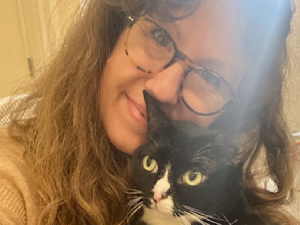
Elizabeth Laura Nelson
Elizabeth Laura Nelson is a writer and editor based in Brooklyn, New York, whose work has appeared in The New York Times, Jenny, Best Life, YourTango, Elite Daily, and more. She focuses her work on relationships, health and wellness, midlife, and lifestyle. As a child, Elizabeth was scared of cats (claws and teeth, yikes) but she has since gotten over her fear and now shares her home with three sweet and gentle feline companions who make life better (and cuddlier) every day.
Related articles
Cat Congestion 101: What to Do if Your Cat Sounds Congested
If your cat sounds congested, they probably are. Here’s how you can help them.
![A hand reaching towards a cat peaking out of a cage.]()
10 Questions to Ask a Shelter About an Adoptable Cat
From medical history to adoption fees to litter preferences, here is everything you need to know.
![An orange cat coughing on a bed.]()
How to Help an Asthmatic Cat Breathe Easy
Everything you need to know about feline asthma, from someone who’s been there.
![two bonded kittens snuggling]()
Why You Should Adopt a “Less Adoptable” Cat
Here’s why bonded kitties, senior cats, and felines with FIV make just as amazing pets as any other.
![Red cat with squinted eyes laying in a basket closeup]()
6 Ways Your Cat Could Tell You They Are in Pain
Here are all the way your kitty is trying to tell you they’re hurting.
![Blonde woman with hand tattoo kissing her gray kitten]()
A Step-by-Step Guide to Adopting a Cat
From where to begin looking to what the adoption process entails to how to prepare your home for your new pet.

